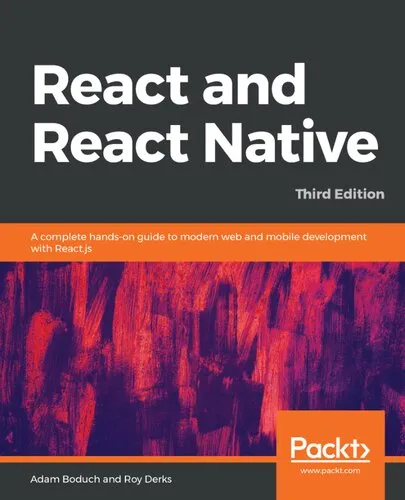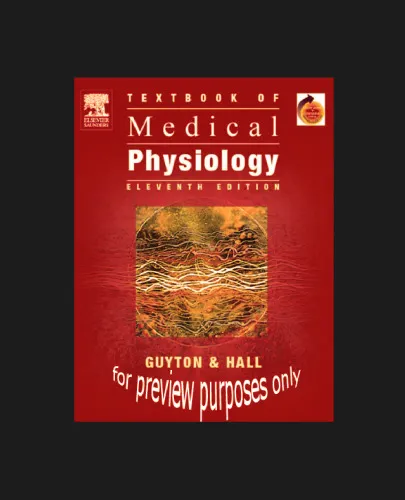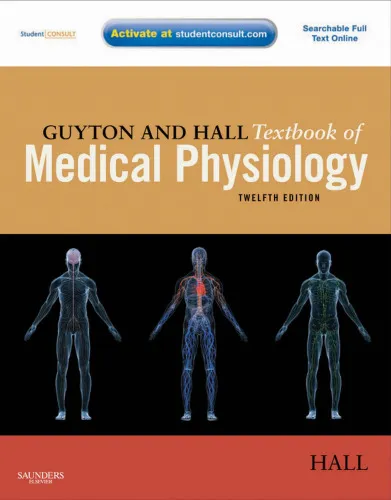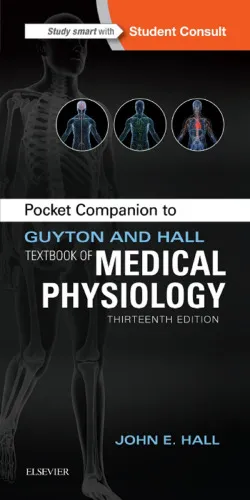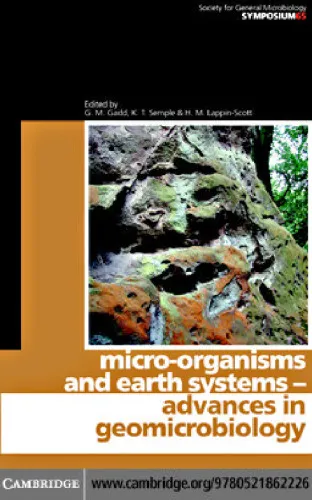Comparative Biochemistry and Physiology Part B: Biochemistry and Molecular Biology
4.5
بر اساس نظر کاربران

شما میتونید سوالاتتون در باره کتاب رو از هوش مصنوعیش بعد از ورود بپرسید
هر دانلود یا پرسش از هوش مصنوعی 2 امتیاز لازم دارد، برای بدست آوردن امتیاز رایگان، به صفحه ی راهنمای امتیازات سر بزنید و یک سری کار ارزشمند انجام بدینکتاب های مرتبط:
خلاصه تحلیلی کتاب
کتاب Comparative Biochemistry and Physiology Part B: Biochemistry and Molecular Biologypp.236—240 یکی از منابع ارزشمند در حوزه علوم زیستی، بیوشیمی مقایسهای و فیزیولوژی مولکولی است که به تحلیل ارتباطات پیچیده میان ساختارهای بیوشیمیایی و عملکردهای فیزیولوژیکی در موجودات زنده میپردازد. نویسندگان، یعنی Karen Batista de Morais، Kathleen Fernandes Grego و Anita Mitico Tanaka-Azevedo، تلاش کردهاند با استفاده از رویکردی تحلیلی، هم تفاوتها و هم شباهتها در سیستمهای بیوشیمیایی گونههای مختلف را شناسایی کنند.
این اثر با بهرهگیری از دادههای آزمایشگاهی و مطالعات توصیفی عمیق، به بررسی مکانیسمهای سلولی و مولکولی پرداخته و به درک بهتر از نحوه تعامل پروتئینها، آنزیمها و متابولیتها در شرایط مختلف محیطی کمک میکند. اطلاعات خاصی مانند سال انتشار، به دلیل نبود منبع معتبر در دسترس، با عبارت اطلاعات نامشخص ذکر میشود.
نکات کلیدی و کاربردی
یکی از مهمترین نکات کتاب، تأکید بر اهمیت تطابق بیوشیمیایی و فیزیولوژیکی با شرایط محیطی در سطح گونهها و جمعیتهاست. این موضوع نقش کلیدی در پژوهشهای علوم پزشکی، زیستفناوری و بومشناسی دارد و به پژوهشگران کمک میکند تا مکانیسمهای بقا و تطابق موجودات زنده را بهتر بشناسند.
اجزای کلیدی شامل بررسی مسیرهای متابولیکی، نقش هورمونها در تنظیم عملکردهای سلولی و نیز مطالعه ساختار و عملکرد پروتئینهاست که طیف وسیعی از کاربردهای عملی، از تحقیقات دارویی گرفته تا مدیریت منابع طبیعی، را در بر میگیرد. تکرار طبیعی کلیدواژههای فرعی مانند «بیوشیمی مقایسهای» و «فیزیولوژی مولکولی» در متن، موجب حفظ ارتباط موضوعی میشود.
نقلقولهای ماندگار
کتاب دارای بخشهایی است که با جملات کوتاه و علمی، پیامهای ماندگاری برای پژوهشگران برجای میگذارد. این جملات علاوه بر انتقال مفاهیم کلیدی، انگیزه ادامه تحقیقات را برای خوانندگان ایجاد میکنند.
تغییر در محیط، زبان بیوشیمی موجود زنده را بازنویسی میکند. نامشخص
مقایسه، دریچهای به سوی درک عمیقتر حیات است. نامشخص
چرا این کتاب اهمیت دارد
اهمیت کتاب در این است که پلی میان دادههای بیوشیمیایی و برداشتهای فیزیولوژیکی ایجاد میکند. چنین رویکردی به ویژه در تحلیل تفاوتها و شباهتهای میان انواع موجودات زنده، به فهم سیر تکامل بیوشیمیایی آنها کمک زیادی میکند. برای پژوهشگران حوزه زیستشناسی، دسترسی به چنین منبعی، به معنای داشتن ابزاری قدرتمند در مسیر کشف روابط پیچیده مولکولی است.
افزون بر این، اطلاعات ارائهشده میتواند به توسعه مدلهای پیشبینی واکنشهای زیستی در شرایط مختلف یاری رساند. این مدلها کاربردهای عملی زیادی در علوم پزشکی، حفاظت محیطزیست و سیستمهای پایش زیستی دارند.
نتیجهگیری الهامبخش
کتاب Comparative Biochemistry and Physiology Part B: Biochemistry and Molecular Biologypp.236—240 نه تنها یک منبع آموزشی و پژوهشی ارزشمند است، بلکه راهنمایی عملی برای درک پیچیدگیهای حیات نیز به شمار میرود. مطالعه آن برای پژوهشگرانی که در جستجوی فهم عمیقتر از تعاملات بیوشیمیایی و فیزیولوژیکی هستند، توصیه میشود. اگر به کشف رازهای سلولی و مولکولی علاقه دارید، این کتاب میتواند نقطه شروعی الهامبخش باشد. آن را مطالعه کنید، یادداشتهای خود را به اشتراک بگذارید و دانش خود را با دیگران گسترش دهید.
Analytical Summary
The book Comparative Biochemistry and Physiology Part B: Biochemistry and Molecular Biologypp.236—240 by Karen Batista de Morais, Kathleen Fernandes Grego, and Anita Mitico Tanaka-Azevedo is a specialized scientific contribution aimed at deepening the understanding of comparative biochemical processes among species. This work situates itself firmly in the crossroads of biochemistry, molecular biology, and evolutionary physiology, presenting data and interpretations that speak directly to the needs of academic researchers, laboratory professionals, and serious students of the life sciences.
Rather than offering a general overview, the authors delve into specific aspects of comparative biochemistry, bringing attention to molecular mechanisms that differentiate species’ physiological responses. The volume in Part B of this reputable journal emphasizes the biochemical pathways and molecular adaptations reflected in diverse taxa, integrating findings from enzymology, protein structure analysis, and metabolic regulation.
Due to the specificity of the page range provided (pp.236—240), the scope of this work is concise yet concentrated, offering clarity through carefully curated methodology, data presentation, and discussion. Publication year information is unavailable due to the absence of a reliable public source, though the context suggests relevance to contemporary biochemical discourse.
Key Takeaways
From this examination in Comparative Biochemistry and Physiology Part B: Biochemistry and Molecular Biologypp.236—240, several important insights emerge that transcend mere data reporting, contributing to the broader discipline of molecular biology and comparative physiology.
Firstly, the work underscores the principle that biochemical diversity across organisms is rooted in evolutionary pressures, environmental variables, and genetic determinants. Secondly, it highlights the critical role of comparative enzymology in identifying functional adaptations. Thirdly, it situates molecular adaptation as both a research focus and a tool for predicting organismal resilience in changing ecosystems.
Additionally, researchers can find methodological exemplars in the way data are structured and interpreted, serving as a reference point for future studies in similar domains. The emphasis on cross-species comparison enriches the biochemistry discourse, making it relevant to ecologists, evolutionary biologists, and applied biotechnologists alike.
Memorable Quotes
“Comparative tools in biochemistry provide a window into nature’s adaptive logic.”Unknown
“Molecular diversity is not mere variance; it is the blueprint of survival.”Unknown
“Understanding physiological adaptation demands a biochemical lens.”Unknown
Why This Book Matters
In the realm of biochemical and physiological research, works like Comparative Biochemistry and Physiology Part B: Biochemistry and Molecular Biologypp.236—240 stand out for their precision and applicability.
This publication is not merely a static record of experiments; it functions as a dynamic touchstone for ongoing scientific inquiry. Its comparative approach invites interdisciplinary dialogue, prompting collaborations between molecular biologists, ecophysiologists, and evolutionary theorists. The integrated view aligns biochemical phenomena with larger ecological and evolutionary frameworks, making it vital for anyone engaged in studying adaptation at the molecular level.
Furthermore, the focus on molecular adaptation contributes to predictive biology, where understanding present mechanisms informs projections about future organismal responses to environmental changes.
Inspiring Conclusion
For academicians, researchers, and students dedicated to unraveling the biochemical complexities of life, Comparative Biochemistry and Physiology Part B: Biochemistry and Molecular Biologypp.236—240 offers a concentrated yet rich perspective that invites deep engagement.
By examining the nuanced interplay between molecular structure and physiological function, the authors empower the reader to recognize patterns of adaptation that are at once specific and universal. The book’s relevance extends beyond its immediate findings, as it inspires further comparative studies leveraging advanced molecular techniques.
Readers are encouraged to read, share, and discuss these insights within their scientific communities, thereby extending the impact of this focused work into broader collaborative frameworks. In doing so, the dialogue around comparative biochemistry and molecular biology will continue to evolve, enriched by the precision and depth reflected in this publication.
دانلود رایگان مستقیم
شما میتونید سوالاتتون در باره کتاب رو از هوش مصنوعیش بعد از ورود بپرسید
دسترسی به کتابها از طریق پلتفرمهای قانونی و کتابخانههای عمومی نه تنها از حقوق نویسندگان و ناشران حمایت میکند، بلکه به پایداری فرهنگ کتابخوانی نیز کمک میرساند. پیش از دانلود، لحظهای به بررسی این گزینهها فکر کنید.
این کتاب رو در پلتفرم های دیگه ببینید
WorldCat به شما کمک میکنه تا کتاب ها رو در کتابخانه های سراسر دنیا پیدا کنید
امتیازها، نظرات تخصصی و صحبت ها درباره کتاب را در Goodreads ببینید
کتابهای کمیاب یا دست دوم را در AbeBooks پیدا کنید و بخرید
1041
بازدید4.5
امتیاز0
نظر98%
رضایتنظرات:
4.5
بر اساس 0 نظر کاربران
Questions & Answers
Ask questions about this book or help others by answering
No questions yet. Be the first to ask!


